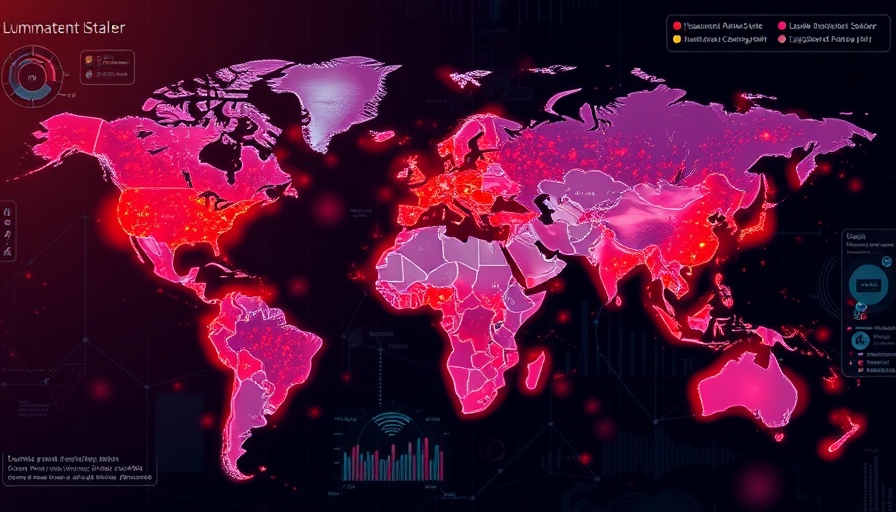
Unmasking Lumma: The Rising Threat of Password Stealer Malware
Recently, Microsoft reported a significant and disturbing discovery: the Lumma password stealer malware has infected over 394,000 Windows PCs across the globe, primarily affecting users in Brazil, Europe, and the United States. This revelation highlights a growing cybersecurity threat that not only compromises sensitive data but also exposes users to potential ransomware attacks.
What is Lumma and How Does It Operate?
Lumma is a sophisticated type of malware designed to steal personal information, such as logins, passwords, credit card info, and cryptocurrency wallets. Users often inadvertently download Lumma by installing shady free games or cracked applications available on dubious websites. Once the malware infiltrates a system, it gathers sensitive data and sells it to cybercriminals who exploit this information for various illegal activities.
The Legal Actions Against Lumma
In response to the emerging threat posed by Lumma, Microsoft, in collaboration with law enforcement, has taken robust steps to dismantle its network. With a federal court's approval, Microsoft has moved to seize 2,300 domains linked to Lumma's command and control servers. This marks a crucial step in the continuous battle against cyber threats, emphasizing the need for tech companies to actively participate in cybersecurity measures.
Connecting the Dots: Why This Matters
The Lumma malware incident is not just an isolated event; it reflects a larger trend in cyberattacks that target individuals and organizations alike. Historically, malware like Lumma has been associated with wider cyberattacks against tech companies, raising questions about data security and the responsibility of tech firms to protect their users. Notable companies like PowerSchool and Snowflake have previously suffered data breaches linked to similar password-stealing operations, demonstrating the pervasive nature of this threat.
Protecting Yourself From Malware
In light of this incident, it's essential for users to take proactive measures against malware. Here are several strategies:
- Download Applications Safely: Only use trusted platforms to download software and avoid suspect sites that offer cracked or free software.
- Utilize Security Tools: Implement antivirus and anti-malware solutions that can detect and neutralize threats before they cause harm.
- Practice Good Digital Hygiene: Regularly update passwords and employ two-factor authentication to add an extra layer of protection.
Understanding Cybersecurity Trends
As technology evolves, so do the methods employed by cybercriminals. Lumma's operation highlights a troubling trend where malware not only compromises individual users but poses risks to larger networks and infrastructures. Understanding and adapting to these trends is crucial for everyone, from casual users to industry professionals.
The Future of Cybersecurity and User Responsibility
The Lumma malware takedown serves as a reminder of the continuous battle against cyber threats and the collective responsibility of users to maintain digital security. Ongoing education about potential risks, coupled with robust cybersecurity practices, will be essential as we navigate this increasingly digital landscape.
As technology continues to advance, staying informed about the latest threats and defenses will play a pivotal role in safeguarding our digital identities and sensitive information.
 Add Row
Add Row  Add
Add 



Write A Comment